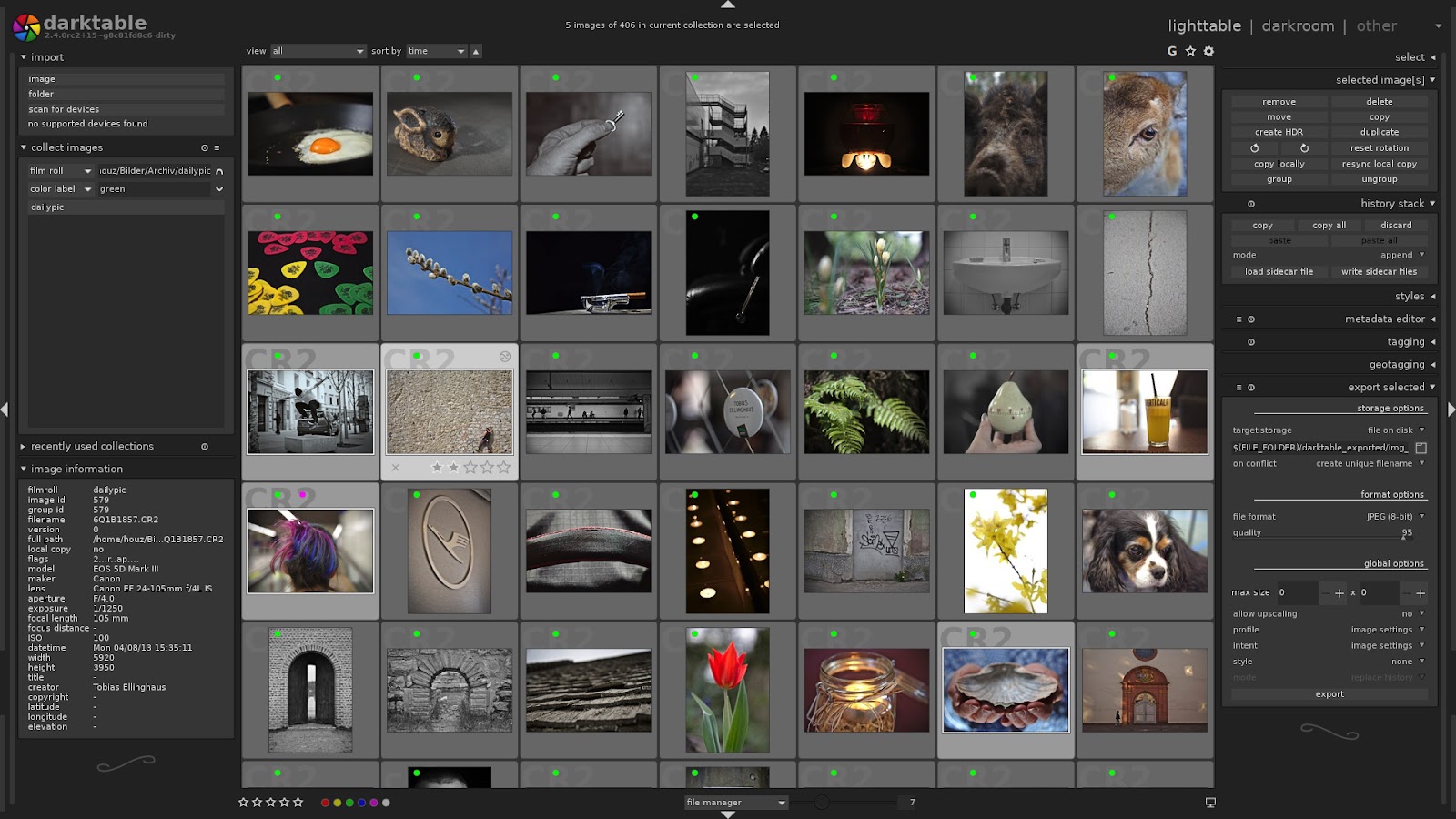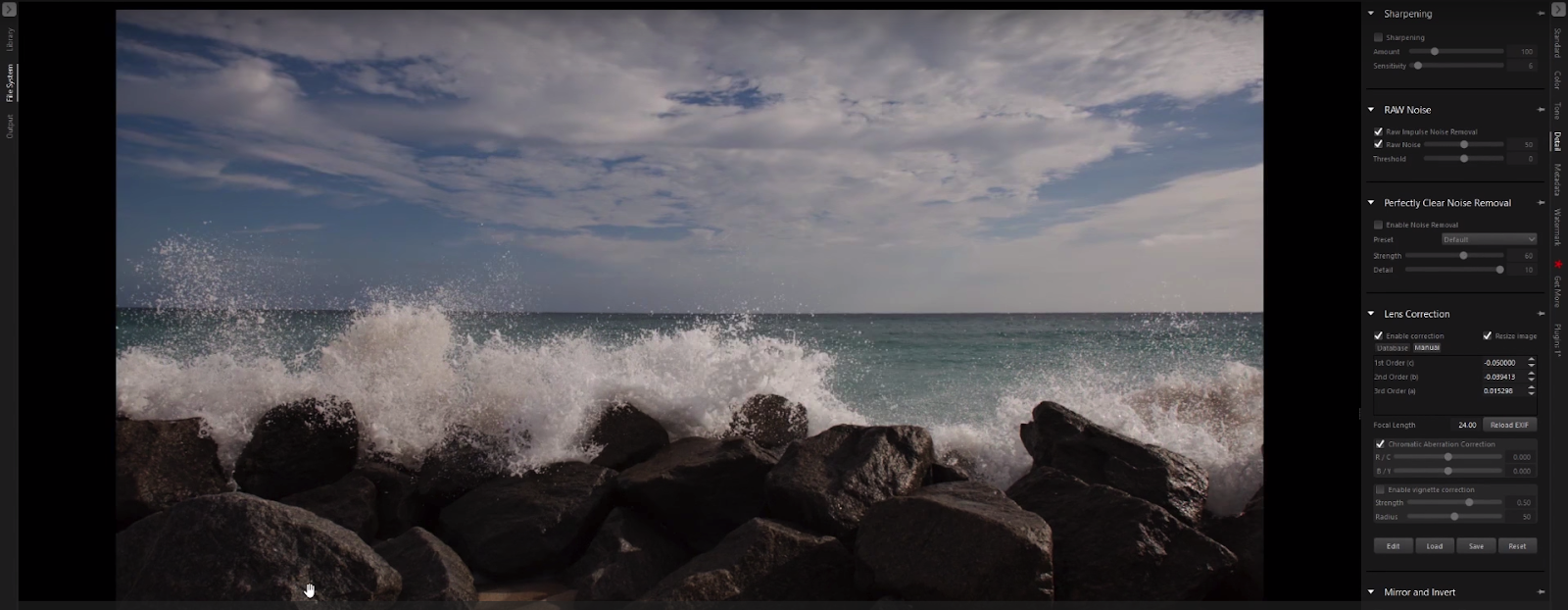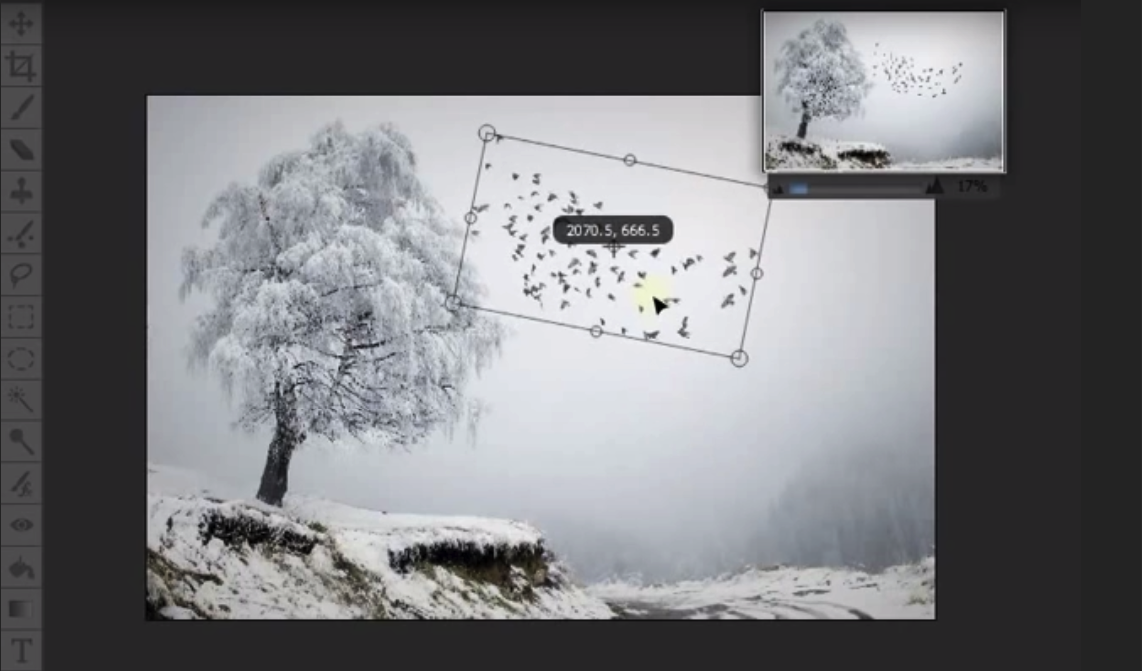Photo editing software is a must for those who are serious about creating true works of art. It is possible to take some astounding photos straight out of the camera, but if you shoot in RAW mode, you can import your photos onto a computer and turn them into something magnificent.
Photo editing software allows you to alter the parameters of a photo such as white balance, saturation and exposure. Furthermore, you can remove impurities and crop the photo or even alter its horizontal and vertical alignment. In short, you can change a quality photo into something awe-inspiring. To help in your quest for photographic perfection, we have created a list of 7 top photo editing programs for Linux devices.
Standout Feature - Add graphical design elements to your photos

GIMP is undoubtedly the most popular image editing program for Linux based devices. This program is a fully fledged photo and image editing package that allows users to edit RAW photos, and also create images from scratch in a similar method to Photoshop. Using GIMP you can create stunning black and white photos, and also use a variety of preset filters to add artistic style to your pics. Furthermore, you can use various digital retouching tools to remove imperfections such as lens flare. Finally, due to the programs great support and community, there is a myriad of guides and tutorials to help you perform advanced photo editing techniques.
Standout Feature - Fantastic image filtering and storage

Darktable is actually an open source program that acts as both a photography workflow organiser and a RAW developer. To start with, Darktable allows non-destructive photo editing - if you make a change by accident, you can undo it and start again. Furthermore, it is possible to export your Darktable files into a range of types including JPEG, PNG and TIFF. Finally, Darktable includes over 60 different modules that allow you to add extra functionality to the program and provide some superb photo editing tools.
Standout Feature - Full control of image parameters
UFRaw actually has three different modes - it can be installed as an add-on for GIMP, and it can also be used as a standalone program on Linux devices. When using UFRaw as a separate product, it provides fantastic editing tools for RAW images and great flexibility. It is possible to alter simple parameters such as white balance, greyscale, colour management and luminosity. Additionally, you can crop, rotate and re-align your photos and change them to specifically defined ratios. This program is easy to use, and the controls are straightforward.
Standout Feature - Advanced rendering capabilities

Although Inkscape is a primarily an image creation tool akin to Photoshop, it also has a wide range of photo editing features. This program allows you to work on multiple layers, clone and heal parts of your image, and also apply transformations such as rotations and cropping. The rendering process is advanced too and you can export high-quality images once you have finished editing them with ease. Finally, Inkscape also supports a multitude of file types including SVG, PNG and EPS.
Standout Feature - Advanced perspective correction including distortion and geometry

Photovio is another superb image editing program that can integrate with GIMP. It is possible to edit both RAW files and Bitmap images at a 16bit resolution and the program contains some advanced corrective tools such as line denoise, bad pixel reduction, media filters and green equilibration. Moreover, Photovio allows you to adjust contrast, sharpening levels, saturation, grain, tone and vignette - all of these features are easy to use and allow a user to really improve the quality of their photos.
Standout Feature - HDR capabilities

Aftershot Pro is one of the few purchasable editing programs for Linux but it is well known and extremely professional. If you have a little spare cash and really want to do some high-end photo editing then consider checking out the free trial of Aftershot first. Using this program, you are granted a high degree of control over your images and can even create your own copyright watermarks. Furthermore, tools include highlight and shadow recovery, blemish remover, lens correction and merge high dynamic range photos. Finally, Aftershot Pro contains a library of different plugins to extend its functionality and an in-depth plugin manager.
Standout Feature - Spot healing and clone tools

If you are looking for an alternative to Lightroom, Pixeluvo is about as close as you can get on Linux devices. This photo editing program has a beautiful interface with intuitive controls and a myriad of superb tools that are all logically placed. To start with, Pixeluvo allows you to correct image distortion, add a vignette, perform spot-healing and even add text and watermarks. Furthermore, this program has advanced colour correction features such as temperature control, hue and saturation levels, and shadow and highlight sliders. Pixeluvo really is a marvellous piece of software and a top contender in the Linux market for editing programs.
We hope you have found this list informative and useful - photo editing is just as important as capturing the photos themselves and you must be confident that you have a useful array of editing tools at your disposal. Using this list, you should now have a fantastic idea of the types of editing software available for Linux devices - why not download a few of them and see which program you find the most intuitive and easy to use?
This is a guest post by Max Therry, the owner of http://photogeeky.com
1. GIMP
Official Website - https://www.gimp.org/Standout Feature - Add graphical design elements to your photos
GIMP is undoubtedly the most popular image editing program for Linux based devices. This program is a fully fledged photo and image editing package that allows users to edit RAW photos, and also create images from scratch in a similar method to Photoshop. Using GIMP you can create stunning black and white photos, and also use a variety of preset filters to add artistic style to your pics. Furthermore, you can use various digital retouching tools to remove imperfections such as lens flare. Finally, due to the programs great support and community, there is a myriad of guides and tutorials to help you perform advanced photo editing techniques.
2. Darktable
Official Website - https://www.darktable.org/Standout Feature - Fantastic image filtering and storage
Darktable is actually an open source program that acts as both a photography workflow organiser and a RAW developer. To start with, Darktable allows non-destructive photo editing - if you make a change by accident, you can undo it and start again. Furthermore, it is possible to export your Darktable files into a range of types including JPEG, PNG and TIFF. Finally, Darktable includes over 60 different modules that allow you to add extra functionality to the program and provide some superb photo editing tools.
3. UFRaw
Official Website - http://ufraw.sourceforge.net/Standout Feature - Full control of image parameters
UFRaw actually has three different modes - it can be installed as an add-on for GIMP, and it can also be used as a standalone program on Linux devices. When using UFRaw as a separate product, it provides fantastic editing tools for RAW images and great flexibility. It is possible to alter simple parameters such as white balance, greyscale, colour management and luminosity. Additionally, you can crop, rotate and re-align your photos and change them to specifically defined ratios. This program is easy to use, and the controls are straightforward.
4. Inkscape
Official Website - https://inkscape.org/enStandout Feature - Advanced rendering capabilities
Although Inkscape is a primarily an image creation tool akin to Photoshop, it also has a wide range of photo editing features. This program allows you to work on multiple layers, clone and heal parts of your image, and also apply transformations such as rotations and cropping. The rendering process is advanced too and you can export high-quality images once you have finished editing them with ease. Finally, Inkscape also supports a multitude of file types including SVG, PNG and EPS.
5. Photivo
Official Website - http://photivo.org/Standout Feature - Advanced perspective correction including distortion and geometry
Photovio is another superb image editing program that can integrate with GIMP. It is possible to edit both RAW files and Bitmap images at a 16bit resolution and the program contains some advanced corrective tools such as line denoise, bad pixel reduction, media filters and green equilibration. Moreover, Photovio allows you to adjust contrast, sharpening levels, saturation, grain, tone and vignette - all of these features are easy to use and allow a user to really improve the quality of their photos.
6. Aftershot Pro
Official Website - https://www.aftershotpro.com/en/Standout Feature - HDR capabilities
Aftershot Pro is one of the few purchasable editing programs for Linux but it is well known and extremely professional. If you have a little spare cash and really want to do some high-end photo editing then consider checking out the free trial of Aftershot first. Using this program, you are granted a high degree of control over your images and can even create your own copyright watermarks. Furthermore, tools include highlight and shadow recovery, blemish remover, lens correction and merge high dynamic range photos. Finally, Aftershot Pro contains a library of different plugins to extend its functionality and an in-depth plugin manager.
7. Pixeluvo
Official Website - http://www.pixeluvo.com/Standout Feature - Spot healing and clone tools
If you are looking for an alternative to Lightroom, Pixeluvo is about as close as you can get on Linux devices. This photo editing program has a beautiful interface with intuitive controls and a myriad of superb tools that are all logically placed. To start with, Pixeluvo allows you to correct image distortion, add a vignette, perform spot-healing and even add text and watermarks. Furthermore, this program has advanced colour correction features such as temperature control, hue and saturation levels, and shadow and highlight sliders. Pixeluvo really is a marvellous piece of software and a top contender in the Linux market for editing programs.
We hope you have found this list informative and useful - photo editing is just as important as capturing the photos themselves and you must be confident that you have a useful array of editing tools at your disposal. Using this list, you should now have a fantastic idea of the types of editing software available for Linux devices - why not download a few of them and see which program you find the most intuitive and easy to use?
This is a guest post by Max Therry, the owner of http://photogeeky.com
RawTherapee?
ReplyDeleteLOL! You forgot to mention RawTherapee!
ReplyDeleteThanks for the addition!
DeletePhotivo ! Not photovio... 😎😎😎
ReplyDeleteWow, read the article dozens of time and still missed this typo (not only this I suspect). Thank you for noticing!
DeleteGreat
ReplyDelete